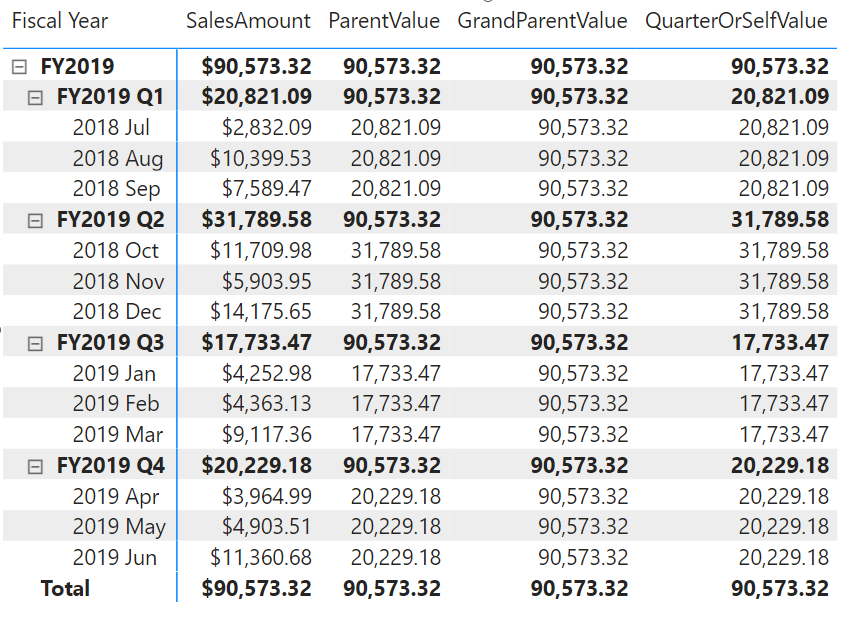COLLAPSE
Applies to: ![]() Calculated column
Calculated column ![]() Calculated table
Calculated table ![]() Measure
Measure ![]() Visual calculation
Visual calculation
Retrieves a context at a higher level compared to the current context. If an expression is provided, returns its value in the new context, allowing for navigation in hierarchies and calculation at a higher level.
Syntax
The syntaxes that perform both navigation and calculation.
COLLAPSE ( <expression>, <axis>[, N] )
COLLAPSE ( <expression>, <column>[, <column>] ... )
The syntaxes that perform navigation only.
COLLAPSE ( <axis>[, N] )
COLLAPSE ( <column>[, <column>] ... )
Parameters
| Term | Definition |
|---|---|
expression |
The expression to be evaluated in the new context. |
axis |
An axis reference. |
column |
A column in the data grid. |
N |
(Optional) The number of levels to collapse. If omitted, the default value is 1. |
Return value
For versions that perform both navigation and calculation, the function returns the value of the expression in the new context after navigating to a new level. For versions that perform navigation only, the function modifies the evaluation context by navigating to a new level.
Remarks
- This function can be used only in visual calculations.
- The navigation-only versions of the function can be used inside the CALCULATE function.
- The levels of the hierarchy are determined by all columns in each axis referenced by the axis reference.
- When columns are specified, the axes are determined by including each column's axis the first time it is encountered.
- When N is specified, the function navigates up the hierarchy N levels from the current level or the topmost level, whichever comes first.
- When multiple columns are specified, the function navigates up the hierarchy until it reaches the first level at which none of the specified columns is present.
- Navigation begins at the current cell in the data matrix, ascending up the hierarchy. If a specified column is at a level lower than the current cell, it will be disregarded.
Example
Given a table that summarizes the total sales for a hierarchy with levels for total, year, quarter and month, the following DAX calculations fetch the value of [SalesAmount] at the parent level, the grandparent level, and the year or self level, respectively.
ParentValue = COLLAPSE([SalesAmount], ROWS)
GrandParentValue = COLLAPSE([SalesAmount], ROWS, 2)
QuarterOrSelfValue = COLLAPSE([SalesAmount], [Month])
The screenshot below shows the matrix with the three visual calculations.
